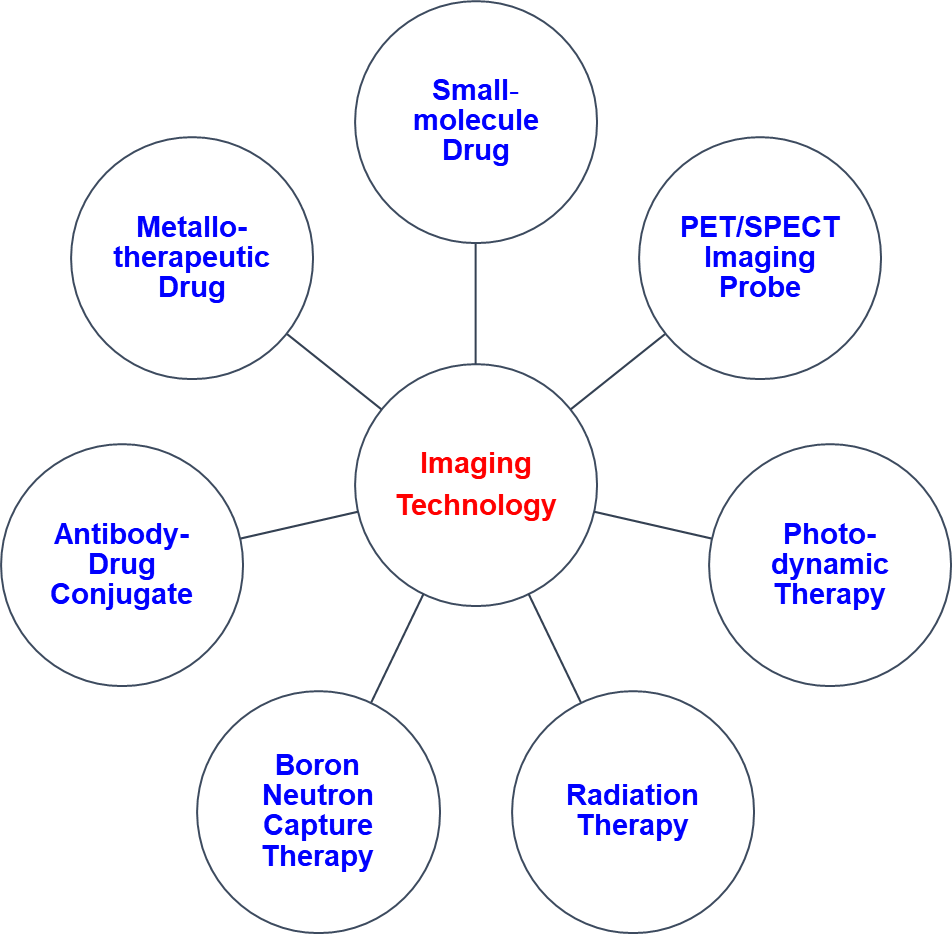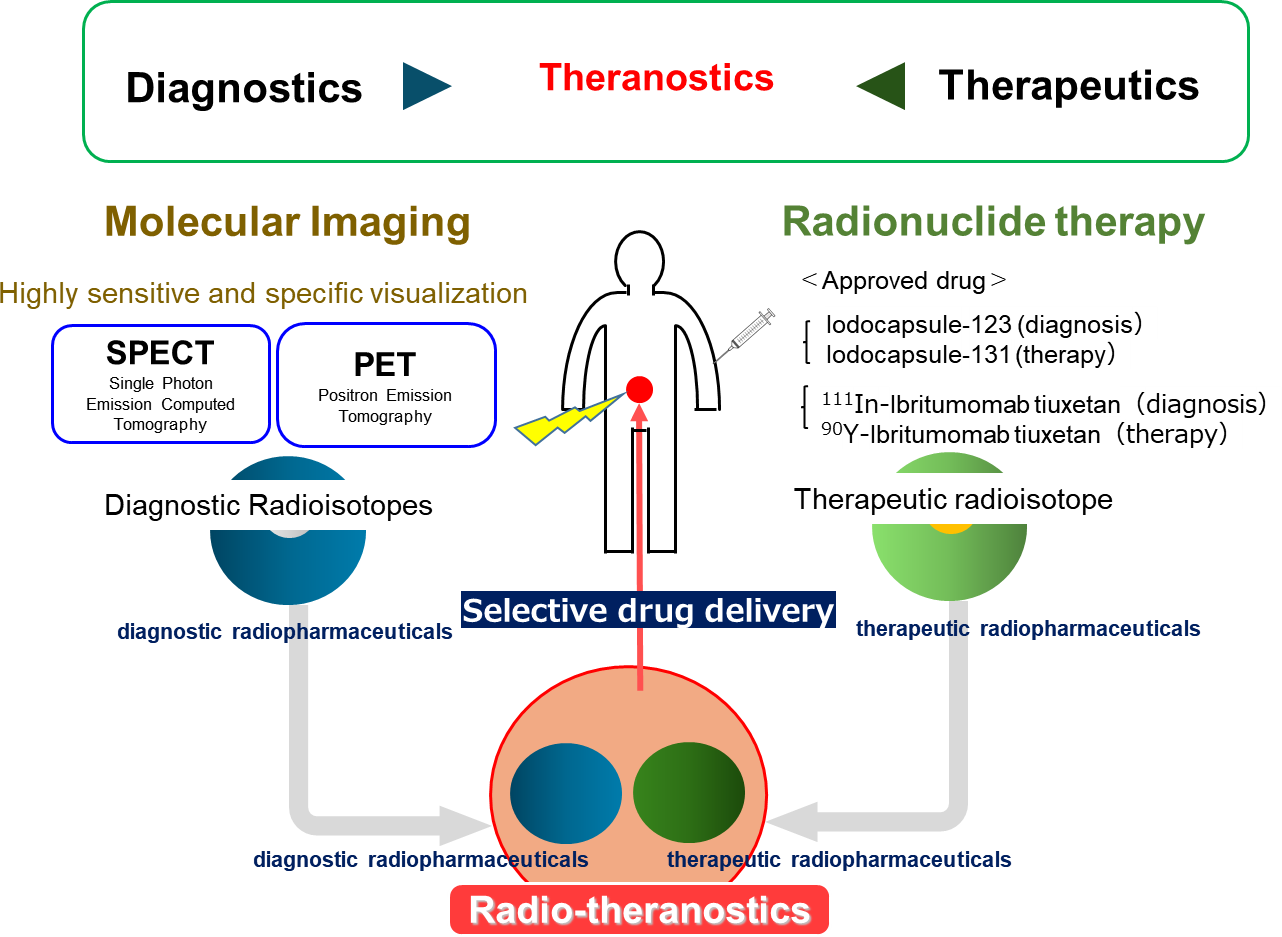English
About us
In the field of Probe Chemistry for Disease Analysis, we are conducting research to establish early diagnosis methods and methods to determine the efficacy of treatment by early treatment by developing radioactive probes that visualize changes in nerve function based on the mechanisms of higher brain functional diseases. We are also conducting research on the development of radioactive probes capable of differential diagnosis based on the type and characteristics of cancer. In organic synthetic chemistry, which forms the basis for the development of probes, we are also conducting research on the development of practical and environmentally friendly oxidative reactions and new synthetic methods utilizing the properties of metal catalysts such as copper and zinc.

Member
Hiroyuki Kimura, Ph.D.
Professor, Research Center for Experimental Modeling of Human Disease
Email: hkimura [at] staff.kanazawa-u.ac.jp
KIMURA, Hiroyuki – Directory of Researchers at Kanazawa University (kanazawa-u.ac.jp)
Hiroyuki Kimura – My portal – researchmap
Yoji Kitamura, Ph.D.
Associate Professor, Research Center for Experimental Modeling of Human Disease
Email: ykitamu [at] staff.kanazawa-u.ac.jp
KITAMURA Yoji – Directory of Researchers at Kanazawa University (kanazawa-u.ac.jp)
YOJI KITAMURA – My portal – researchmap
Takashi Kozaka, Ph.D.
Assistant Professor, Research Center for Experimental Modeling of Human Disease
Email: t-kozaka [at] staff.kanazawa-u.ac.jp
KOZAKA, Takashi – Directory of Researchers at Kanazawa University (kanazawa-u.ac.jp)
Takashi Kozaka – My portal – researchmap
Research
“Theranostics” is a new medical technology combining Therapeutics and Diagnostics, with the aim of providing the appropriate treatment based on an accurate understanding of the pathological conditions of each patient. In addition, a new medical approach called precision medicine, in which detailed biological information of individual patients are integrated to select an optimal therapeutic strategy, has also attracted international attention in recent years. In precision medicine, patients are precisely grouped according to characteristics of their cells, genes, receptors, and expressed proteins determined at a molecular level using state-of-the-art technology, and are then provided with appropriate medication, therapy, and prophylaxis; this approach became widely known in 2015 because the former US President Obama mentioned it in his State of the Union address. If precision medicine is developed to a sufficient extent so as to make optimized treatment a reality, it will also contribute to the reduction of adverse events and improvement of patients’ QOL. Yet another possible result of the development of precision medicine will be the promotion of development of new therapeutic agents to be used for precisely classified disease groups; therefore, precision medicine will greatly improve the efficiency of new drug development and is likely to have a major impact on the drug discovery field. Accordingly, theranostics is expected to play an important role in promoting precision medicine.
Diagnostic technologies for realizing theranostics include molecular imaging. Molecular imaging technology enables the visualization of biochemical and molecular biological processes at tissue/cellular levels, and its application to research including basic, clinical, and drug discovery areas of research is being studied. Well-known biomolecular imaging methods include methods using light, such as visible light, fluorescence, and near infrared light, magnetic resonance imaging using the nuclear magnetic resonance phenomenon, and positron emission tomography (PET), and single photon emission computed tomography (SPECT) using radiation. Furthermore, additional new imaging methods have also been developed in recent years, such as photoacoustic imaging, which combines the high sensitivity and resolution of fluorescence imaging with the high permeability of ultrasonic imaging. Among these, PET and SPECT molecular imaging technologies using a radioactive probe that can capture disease characteristics are particularly powerful diagnostic methods that can be used to produce detailed three-dimensional information related to disease sites throughout the entire body, and their application to precision medicine (Imaging Based Precision Medicine) is the only approach to noninvasive, quantitative evaluation of molecular pathology of local lesions, and is hence considered essential. Through the application of this technology, it is possible to select the optimal treatment for individual patients quickly and accurately.

- Research and development of radio-theranostics probes for cancer
- Early diagnosis of Alzheimer’s disease (AD) by visualization of the cholinergic nervous system
- Research and development of nuclide production processes, separation technology, and labeling Methods
- Research and development of automatic synthesizers, robotic system, and analyzers
- Clinical research: First in Human trials
Recruitment
Join Our Graduate Program!
As a graduate student, you’ll have the opportunity to delve into cutting-edge research, collaborate with leading experts in your field, and pave the way for future innovation.
Master’s Program and Doctoral Program
We have two years’ master’s and four years’ doctoral programs.
Graduate School of Medical Sciences, Kanazawa University (kanazawa-u.ac.jp)
Address
Kanazawa University
Division of Probe Chemistry for Disease Analysis/
Central Institute for Radioisotope Science
Research Center for Experimental Modeling of Human Disease
13-1 Takara-machi, Kanazawa 920-8640 JAPAN
Access
Links
Kanazawa University (kanazawa-u.ac.jp)
Research Center for Experimental Modeling of Human Disease (kanazawa-u.ac.jp)
Graduate School of Medical Sciences, Kanazawa University (kanazawa-u.ac.jp)